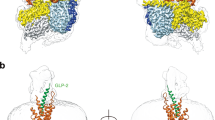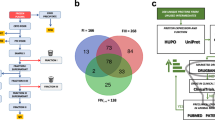Abstract
THE recent publication of a communication on the preparation of cæruloplasmin1, the main cuproprotein of plasma, prompts this brief account of a method of its preparation from the precipitate G2, the mixture of α- and β-globulins obtained in the plasma fractionation scheme of Kekwick and Mackay2. With G2 from batches of plasma of 40–150 l., the following stages were used: (1) Extraction of G2 by 0.07 M sodium chloride at pH7 and denaturation of extracted lipoprotein with ether below − 25° C. by the McFarlane technique3; (2) precipitation of cæruloplasmin from the ether-saturated extract at pH 4.8; (3) solution of the precipitate in ether-saturated 0.1 M sodium chloride, removal of impurities by precipitation at pH 5.35 and a second McFarlane treatment; (4) reprecipitation of cæruloplasmin at pH 4.8 as in (2) and solution in 0.1 M sodium chloride; (5) precipitation of impurities at pH 4.8 by diluting to 0.02 M sodium chloride and precipitation of cæruloplasmin by further dilution to 0.0045 M sodium chloride. The product was dissolved in 0.l M sodium chloride. E 1 cm. (605 mµ)/E 1 cm. (280 mµ), which gives a measure of degree of purification, was 0.019.
Similar content being viewed by others
Article PDF
References
Steinbuch, M., and Quentin, M., Nature, 183, 323 (1959).
Kekwick, R. A., and Mackay, M. E., Medical Research Council Spec. Rep. No. 286 (1954).
McFarlane, A. S., Nature, 149, 439 (1942).
Morell, A. G., and Scheinberg, I. H., Science, 127, 588 (1958).
Litt, M., and Boyd, W. C., Nature, 181, 1075 (1958).
Author information
Authors and Affiliations
Rights and permissions
About this article
Cite this article
CURZON, G., VALLET, L. Preparation of Cæruloplasmin from the G2 Fraction of Human Plasma. Nature 183, 751 (1959). https://doi.org/10.1038/183751a0
Issue date:
DOI: https://doi.org/10.1038/183751a0



